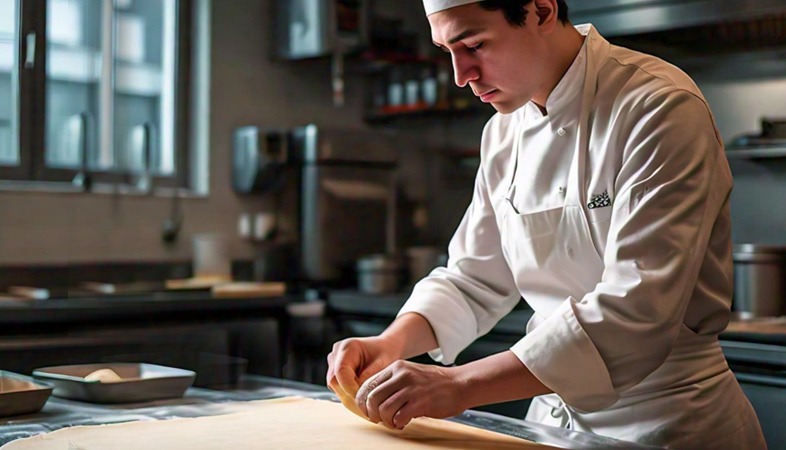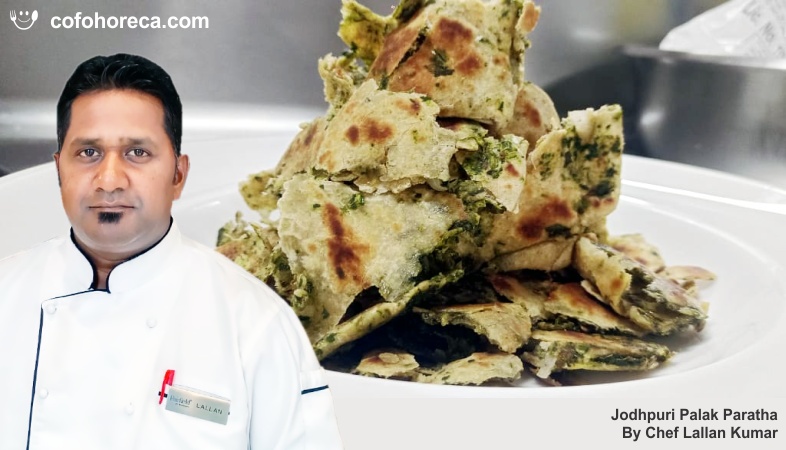Mastering Lamination: Techniques for Perfecting Croissants and Danish Pastries
While mastering lamination can be challenging, it’s essential for any baker looking to achieve the perfect croissant or Danish pastry.
Laminated dough is the foundation for some of the most
beloved pastries in the world, particularly croissants and Danish pastries.
These light, flaky creations owe their texture and flavor to the art of
lamination, a process that involves layering butter and dough in a way that
produces hundreds of thin, delicate layers. While mastering lamination can be
challenging, it’s essential for any baker looking to achieve the perfect
croissant or Danish pastry. Understanding the techniques behind this process is
the first step toward mastering the craft.
The key to successful lamination lies in maintaining the right balance between dough and butter. Both elements must be cold yet pliable to achieve even layers without the butter melting or breaking through. This starts with preparing the dough, or détrempe, a relatively simple combination of flour, water, yeast, sugar, and salt. The dough should be mixed just until it comes together, allowing for a light, airy texture later. Once the dough is rested and chilled, it's ready for the incorporation of butter, which is the critical component of lamination.
Butter is the star of laminated dough, providing both flavor and texture. To prepare for lamination, the butter is rolled into a thin sheet, known as a beurrage, and then enclosed in the dough. The butter must be cold but flexible, which requires careful temperature control. Too cold, and the butter will shatter when rolled out; too warm, and it will melt into the dough, ruining the distinct layers.
Once the butter is enveloped by the dough, the lamination process begins. This involves rolling out the dough into a large rectangle and folding it into thirds, like a letter, before turning it 90 degrees and repeating the process. These steps, called turns, are repeated several times—usually three to six—depending on the recipe. Each fold multiplies the layers, creating the characteristic flakiness of croissants and Danish pastries. Every step must be executed with precision, as improper folding or uneven rolling can lead to irregular layers, compromising the final product.
Temperature control is critical throughout the lamination process. The dough must be kept cool to prevent the butter from melting but not so cold that it becomes too stiff to work with. After each turn, the dough is chilled to allow the butter to firm up and the gluten to relax. This resting period is crucial because it helps maintain the integrity of the layers, ensuring that the dough will rise properly in the oven and produce the signature airy structure.
When it comes to baking, croissants and Danish pastries undergo a final transformation. As the dough heats up, the water in the butter and dough turns to steam, causing the layers to separate and rise. The result is a beautifully golden, crispy exterior and a soft, tender interior. Timing is essential in the baking process, as even a minute too long or too short in the oven can affect the texture and flavor.
One of the key differences between croissants and Danish pastries lies in their composition. Croissants, a French classic, are traditionally savory or filled with simple ingredients like chocolate or almond paste. They rely entirely on the lamination process to achieve their flaky texture. Danish pastries, on the other hand, often incorporate additional ingredients like fruit, custard, or cream cheese and are generally sweeter. The dough for Danish pastries may also contain more sugar and eggs, resulting in a slightly richer and more tender texture compared to croissants.
Mastering lamination requires not only technical skill but also a deep understanding of the dough’s behavior at every stage. The process demands patience and attention to detail, as even small mistakes can lead to inconsistent results. Bakers must learn to read their dough, knowing when to chill it, when to roll it, and when to stop handling it to preserve the delicate layers.
Lamination is the cornerstone of crafting perfect croissants and Danish pastries. The careful balance of butter and dough, the precision of rolling and folding, and the importance of temperature control all play a vital role in achieving the light, flaky layers that define these pastries. While challenging, mastering lamination opens the door to creating some of the most exquisite baked goods, turning simple ingredients into a luxurious, buttery experience. With practice and perseverance, any baker can perfect the art of lamination and produce croissants and Danish pastries that are both visually stunning and delicious.
.png)




























